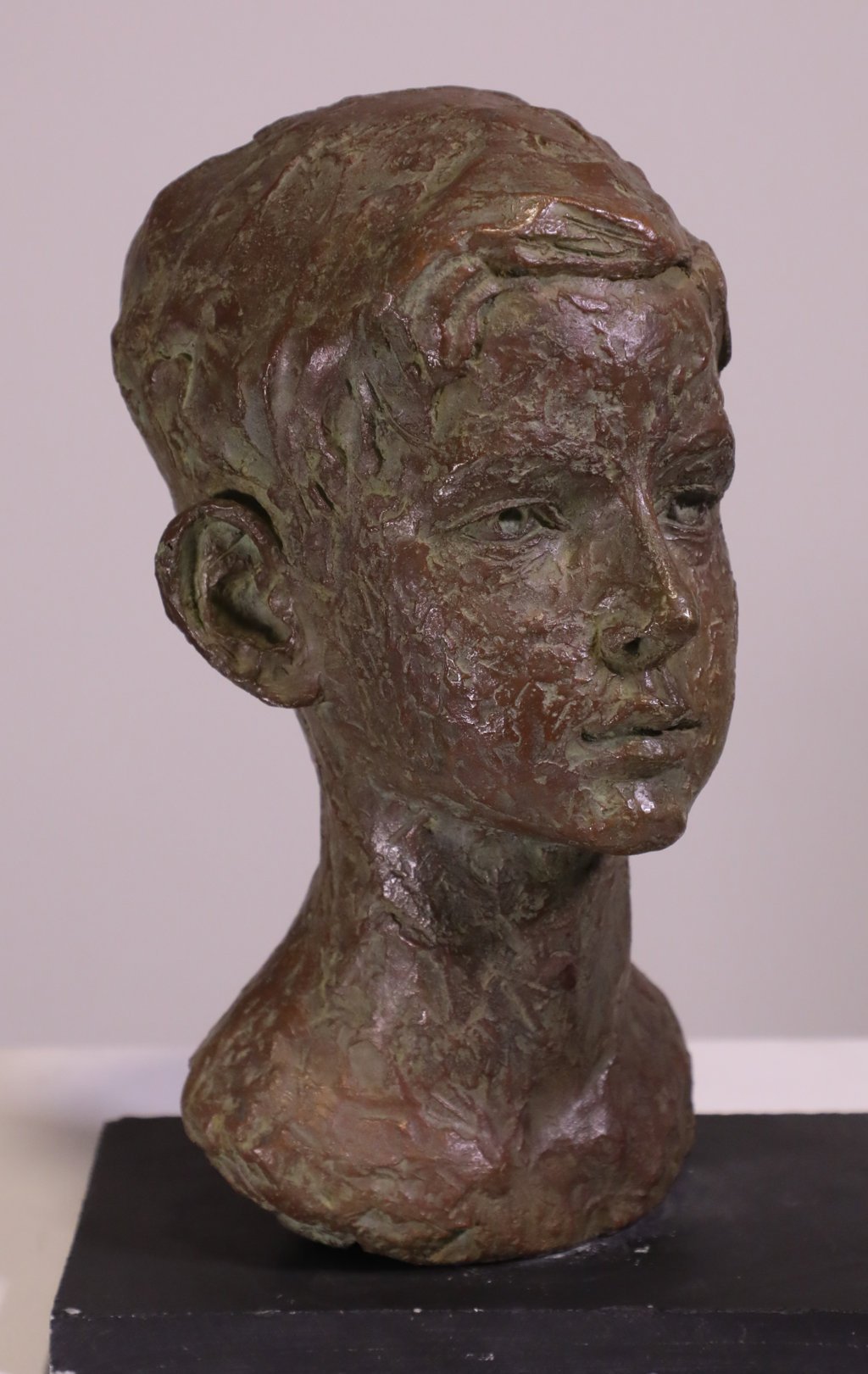
Sculptures by Sarbari Roy Choudhury
December 7 2020 – February 13, 2021 at Akar Prakar, Delhi
Sarbari Roy Choudhury’s strength lies not in shaking up our conception of art or sculpture, but in carrying its known possibilities to a level of perfection and subtlety so rare that it assumes an aura of uniqueness. This makes him stand out not only among his contemporaries, but also in the history of modern Indian sculpture.
As a sculptor, Sarbari’s sole subject is the human body, and essentially a modeller, he turns clay into sensuous flesh with great sensitivity. He approaches the body in two different ways. As a portraitist, he sees it primarily as an embodiment of individual subjectivity as expressed through the human head; and he always presents it on a scale close to life. He sees the head as a compressed core, and he endeavours to transform it into a malleable surface, animated by discrete emotions. Being an ingrained connoisseur of music, several of them are of musicians and whether the head is turned meditative and rock-like as in the portrait of Ali Akbar, or it is worked into a musical tremor as in the case of Bade Gulam Ali Khan, or set in motion by an intense wave of emotion as in the portrait of Siddheshwari Devi – their sculptural plasticity is determined by the character of their musical expression. In other portraits too, of friends and acquaintances whose heads attract his attention, he bestows on them the mood his sitters evoke in him. The attempt to give a stable expression to the fleeting pervades all his portraits to some degree.
In his other sculptures, he attempted the opposite. In them, he focuses on the human body, almost exclusively on the female figure, which he experiences as a vast field fertilised by centuries of primeval desire of both men and women, but as projected onto the female body by the male sculptor. Made vast and fecund by desire, they lose their definiteness of form, their framing contours, and become, to him, an organ-less mass of flesh, so to speak. They engulf him like sea or dunes animated by the elements, into which he is constantly pulled. In an act of self-rescue and self-recovery as a sculptor, again and again, he compresses its amorphous vastness into a hard core, an object that can be contained within one’s palms, sometimes even between fingers, and caressed. In them, he reshapes and brings the unruly body within his grasp, quite literally. While doing this, the head is either loped off or reduced to a stump and denied its separateness and locus. Similarly, at times the body is reduced to a psychologically charged synecdoche, to an overblown erogenous zone.
As he tames the female body and makes it manageable by miniaturising it, the turbulent waves, the fetishistic charge that overawes him are smoothened and given a harmonious wholeness by the sculptural forms he invents and the emotions are sublimated. There are elements in his working process—like the compression and transformation of the amorphous clay into sensual bodies, and the illusory monumentality he inscribes into his miniature sculptural forms—which suggest that this is a fictional play enacted in his mind, not a reflection of real manipulations performed on the external world. And those who knew him well will immediately recognize the fictionality of his female forms. In person he was affable, courteous, deferential, even a bit ceremonious, and anything but seductive.
Thus the real and the imagined, the perceived and the desired take two different forms in his sculptures. The subtle tension between the two is what animates them, especially in the re-imagined and compressed female forms. Seeing them together with his portraits reveals this aspect of his work more clearly and draws our attention to the sleight of hand with which he transmutes the female body as a sculptor, and, thereby, give us a clearer understanding of the main burden of his sculptural oeuvre, namely, sculpture as body in the mirror of desire explored by the mind’s eye.
Siva Kumar, art historian and curator

















